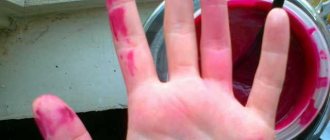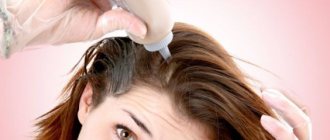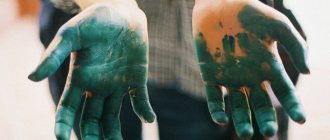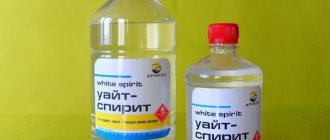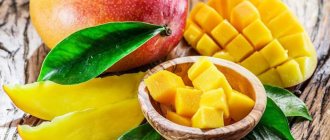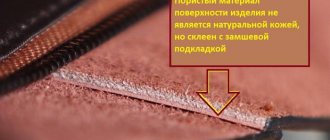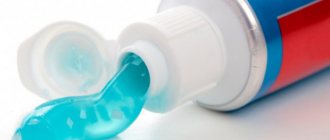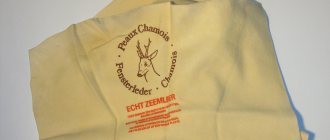Leather is a universal material that is characterized by strength and reliability, aesthetics and stylish appearance. Raw materials are used in the production of shoes, bags and clothing, furniture, covers and other products. However, today they also produce materials that imitate leather. Such products are much cheaper.
But artificial leather quickly loses its presentable appearance. Scuffs, cracks and other defects appear on the products. In addition, they are not comfortable to use. In this article we will look at how to distinguish natural leather from artificial leather.
Properties and types of genuine leather
Genuine leather comes in different types and varies in thickness, resistance to wear, breathability and other similar parameters. There are three main methods of leather processing. Raw leather is a skin that, after certain procedures, is first soft and elastic, and after drying, hardens. This is a suitable solution for covering various objects, including drums and other similar musical instruments.
A common type is tanned leather, which is a strong and durable, plastic and elastic, soft material. In addition, it is resistant to moisture, heat and cold, and temperature changes. Raw meat is used for orthopedic shoes, horse saddles, bicycles, motorcycles and other items. The result is a durable, reliable and rigid material.
How can different types of leather differ from each other?
I. By type of raw material
- Pigskin. The cheapest type of leather. Typically used as lining material. Insufficiently elastic, has a rough and hard surface, and has a persistent odor.
- Cattle leather. – Calfskin. It is considered the highest quality of all types of leather due to its softness, high strength and resistance to creases. Its use is very wide: from furniture upholstery to accessories. – Cow leather. Coarser and slightly less durable than veal. Used to make shoes and bags. - Bull skin. The material is thick and durable, thanks to which the products can last almost forever.
- Sheep leather. Durable and very soft. Excellent for making premium products.
- Goatskin. Dense and durable, it is often used in the manufacture of accessories from popular brands.
- Ostrich leather. Elastic and soft leather. It makes comfortable shoes, outerwear and accessories.
- Snake skin. Soft and pleasant to the touch. Like crocodile, it belongs to premium leather. More often, python or cobra skin is used for products of this type.
- Crocodile skin. The strongest and most durable material. The characteristic pattern gives originality to the product.
- Deerskin. Finding things made from this material on sale is very difficult. Stretchable leather similar to suede.
By the way, read this article too: Gucci belt: how to identify the original?
II. By processing method:
- Saffiano is a thin and soft leather of bright colors. It is produced by vegetable tanning (tannic acids) of goat leather, less often sheep or calf leather.
- Nubuck is made from cattle leather. This is fine-haired leather (similar to suede) chrome tanned. It has good air permeability, but low wear resistance.
- Suede is the skin of small animals that is treated with fat during tanning. Highly malleable and porous material. Less wear-resistant than smooth leather and requires more careful care.
- Laika is a thin, soft, elastic leather of dogs, goats or sheep obtained by tanning with aluminum alum. Mainly used for making gloves. The surface is smooth, without wrinkles.
- Patent leather is smooth leather coated with a thin layer of synthetic varnish. Requires careful care, is not resistant to cold (below - 10 degrees) and water.
- Shagreen is a soft leather with a fine relief pattern, vegetable-tanned goat and sheep skins.
- Nappa is a durable and inexpensive leather made from cattle hides. Plastic and soft with a very even color.
- Velor – made from all types of chrome-tanned hides. The front surface is treated with abrasive materials.
Characteristics of artificial leather
Natural leather imitates leatherette. This is a synthetic leather that includes knitwear, polymer coating and impregnation, and only one surface layer of natural raw materials. Often, leatherette is characterized by high resistance to dampness and frost, bending and deformation. Therefore, genuine leather becomes more difficult to distinguish from artificial leather.
Leatherette products are popular due to their availability and low price, practicality and long service life. There are also different types of artificial leather. This is dermantine, vinyl and eco-leather, pressed type.
Vinyl leather is a durable and reliable material that completely imitates natural raw materials and is suitable for drapery. Dermantin represents products with a slight odor. It is resistant to high and low temperatures, the negative effects of moisture and abrasion. It has an affordable price compared to natural raw materials.
Another type of leatherette is eco-leather. This is an elastic, soft and comfortable odorless material that does not allow air to pass through, does not crack or deform. The products are resistant to wear and abrasion. Due to modern technology and processing, natural and artificial materials are becoming more difficult to determine. Let's take a closer look at how to recognize fake leather.
Learning to distinguish natural leather from artificial leather
What attracts us to genuine leather products is durability, elegance and the ability to maintain an aesthetic appearance. It is these properties that serve to create truly high-quality products. Leather is used to make clothes, shoes and various accessories. Today, leather goods are considered one of the best ways to emphasize your status, and bags, business card holders, and briefcases made of genuine leather are considered a prestigious gift. In addition to the usual artificial leather, sellers offer products made from pressed leather, assuring that this is also genuine leather.
How to distinguish a substitute from genuine leather?
Nowadays, the number of methods for processing materials is growing every day. Therefore, determining whether a material is genuine leather is becoming increasingly difficult. But there are still several ways that will help you quickly figure out where the original is and where the fake is.
It is necessary to immediately identify the fact that pressed leather does not exist as such. This is the same artificial leather, into which parts of leather waste are added during the manufacture of products - shavings, trimmings, and so on. After which everything must be crushed, mixed, heated and compressed. When heated to high temperatures, synthetic fibers melt, gluing the material. The result is a fairly cheap material with low air and moisture permeability. This material is suitable for making bags, wallets or belts, but shoes made from it are hard and inelastic, harmful to the foot. The main problem with pressed leather is its fragility; such products are short-lived.
Genuine leather is a natural material with a thousand-year history. People learned to process and then use leather one of the first. Genuine leather is animal skin processed in a special way. Elasticity, breathability, density, thermal conductivity, water absorption - these are the most useful properties of leather. Of course, genuine leather is in high demand and price. Therefore, unfortunately, there are many ways to imitate genuine leather. To distinguish artificial leather from natural leather, we must know the main features.
1. Genuine leather is softer and more elastic than artificial leather, and also has a more uniform texture.
2. Artificial leather gives off a strong chemical “aroma”. Naturally, the smell of genuine leather should not be unpleasant. You should not trust only the smell of leather, as there are special leather “flavors” that are used in production.
3. If the material heats up quickly enough in your hands and retains heat for some time, it is genuine leather. If it remains cold, it is leatherette.
4. Genuine leather should be full, that is, the leather should be soft to the touch, and the place of the imprint should quickly take on its natural appearance when pressed.
5. If you bend a leather product in half, the color should not change at the bend. And even with multiple folds there should be no marks or dents.
6. A sample of the material attached to the item can also tell about its composition - a regular diamond means artificial leather, a figured diamond means genuine leather.
7. The reverse surface of natural leather should be soft, velvety, fleecy. If you run your hand, it should change color due to the movement of the fibers.
Many people make the mistake of thinking that natural leather must be set on fire and it will not catch fire. You need to understand that the leather is treated with an aniline coating, which can catch fire when heated. Of course, at the same time, some properties for testing will change, but still this is genuine leather, and according to the main features described above, it can be distinguished from artificial leather.
Differences between genuine and pressed leather
Pressed leather is very similar in appearance to natural leather. This is a soft, elastic, durable and evenly colored material that is made from natural leather waste. Due to this, the products are much cheaper than genuine materials.
In the production of pressed material, leather scraps and scraps are used, as well as synthetic fibers for bonding and strength. First, the waste is processed and turned into granules, after which it is mixed with artificial additives and pressed. The resulting fabric is dried and passed through the press again. After cooling, the skin is dyed, and the result is a durable, elastic and strong material.
Despite its aesthetics, apparent strength, reliability and durability, pressed leather has a much shorter service life than natural leather. It cracks and wears out, wrinkles and deforms, stretches or, conversely, shrinks.
The pressing allows moisture to pass through, but does not allow air to pass through, and is easily torn and broken. In shoes made of such materials, your feet constantly sweat. Jackets, bags and other things will quickly wear out and crack, and may tear at the seams. Therefore, it is important to distinguish between genuine leather and pressed leather. To do this, use the methods described above.
How to determine your scalp and hair type
How to determine your scalp type? It is inseparably associated with the type of hair; they are interconnected with each other. Therefore, you can determine your scalp type based on the distinctive features of the hair itself.
| Hair type | Normal | Fat | Dry | Mixed (oily at the roots, dry at the ends) |
| Need for washing | Every 2 – 3 days | Daily | Once a week | Every 2 – 4 days |
| Scalp, hair roots | After washing they are normal, after a couple of days they are oily | After washing they are normal, in the evening of the first day or in the morning of the second they are oily again | After washing - dry or normal, 3-4 days - normal, by the 7th day - oily | After washing they are normal, after 2-3 days they are oily |
| Tips (with medium hair length) | Normal or slightly dry, may irritate a little | No splits or almost no splits | Dry, brittle, may have a lot of broken or split ends | Dry, split ends |
| Shine | After washing - clean shine, after 2-3 days - greasy shine at the roots | Clean shine after washing, greasy shine by the end of the first day or the morning of the second | After washing there is a slight shine, then the hair becomes dull | After washing, there is a clean shine at the roots, a slight shine at the ends. On days 3-4 – oily shine at the roots and lack of shine at the ends |
| Splendor and volume | Normal fullness | Only immediately after washing or not at all | Reinforced | Medium, ends may get frizzy |
| Electrification | Sometimes | Very rarely | Often | Maybe at the ends |
| Styling without styling products | Gives in well | Hair can be styled, but it doesn't last long | Poor styling | Root styling |
How to distinguish a genuine leather jacket
Budget models of leather outerwear are made from pigskin. However, such material loses its shape in a short time, abrasions and roughness form on the surface, so such a product will not last long. Cowhide leather will become stronger, more reliable and durable due to the greater thickness and rigidity of the raw material. Water does not leak through such material. It does not wrinkle or wear out.
To distinguish genuine leather from eco-leather, run your palm over the surface of the jacket. Genuine material will quickly heat up by hand. And if you apply a few drops of plain water, the moisture will be absorbed and the area will darken slightly. In the opposite cases, you are dealing with leatherette.
Gently run your fingernail over the surface of the jacket. There will be no marks or scratches on the natural material. Inside the original, the edge of the products should be rough, not smooth. To check the quality of the paint, take a white handkerchief or other light-colored cloth and wipe the leather surface. High-quality painting leaves no marks.
Be sure to check the quality of seams, cut and fittings. The edges of the jacket or coat should be neatly hemmed and the seams should be straight. Do not choose products with protruding threads, poor-quality snaps, buttons or zippers. They should be easy to open and close, securely and firmly sewn.
Pay attention to the type of lining of the outerwear. For warm spring and autumn, viscose or polyester is suitable. Choose a demi-season and winter jacket or coat with natural fur. How to care for a leather jacket so that it retains its physical properties and presentable appearance longer, see here.
How to check leather shoes
High-quality leather, including patent leather, shoes do not get wet, retain heat, guarantee comfortable wear and last a long time. In such shoes, your feet do not get cold or sweat. But to get the benefits of such products, it is important to choose real leather.
Genuine leather shoes must contain a sticker that includes information about the materials from which the sole and lining, the upper and lower parts of the product are made. In addition, it has a curly badge that says leather (English), genuine cuir (French), echtleder (German) or vera pelle (Italian) depending on the country of the manufacturer. If you see an icon in the form of a diamond made of pressed leather, it means that artificial raw materials were used.
The backing material of leather shoes will be fleecy, and the outer fold will resemble a rounded roller. Faux leather has a thin and flattened fold, and the inside material is smooth. In addition, the reverse side of the fake is made of textiles. How to properly care for leather shoes, see the link.
How to not only determine your skin type, but also identify the first signs of aging
The first signs of aging can be identified as follows: press your thumb into the center of the cheek and rotate. What's happening?
- If there is resistance, it means you are young and have no signs of aging.
- Wrinkles appear, radiating from the place of pressure - this indicates the first symptoms of withering.
- Sluggish skin with wrinkles indicates that the aging process is already underway.
